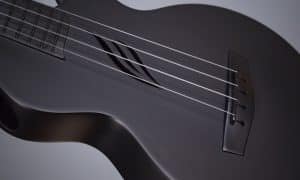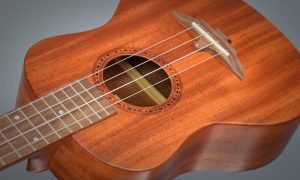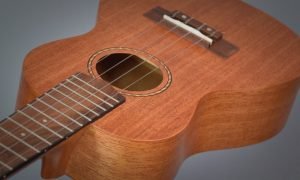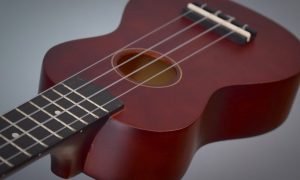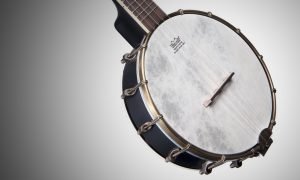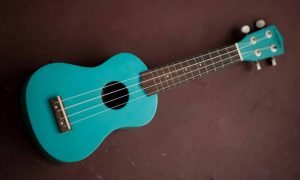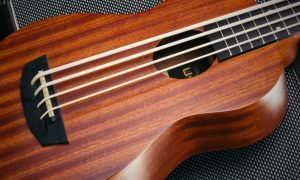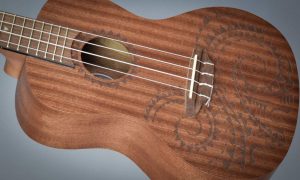In this article, I’ll compare the different ukulele sizes and discuss which sizes I feel are best for beginners.
You might also like my posts on the best ukuleles for beginners and how to buy a beginner ukulele.
Quick Picks
In a rush? Don’t want to do a ton of research? Here are three of the best beginner ukuleles I’ve found for sale online for under $100.
These are all concert or tenor ukuleles, which are my favorite ukulele sizes and what I recommend for most beginners.
I’ve purchased and played each of these models, so I feel confident recommending them for any beginning ukulele player. To learn more, check out my ukulele review section.
|
|
Lohanu LU-C Tenor | 7,809 Reviews | $79.97 | Check Current Price |
|
|
Kala KA-15S Concert | 4,286 Reviews | $99.00 | Check Current Price |
|
|
Donner DUC-1 Concert | 8,713 Reviews | $55.99 | Check Current Price |
The Four Ukulele Sizes
The four most common ukulele sizes are soprano, concert, tenor, and baritone.
Tuning & Playing
Soprano, concert, and tenor size ukuleles are all tuned the same way: G-C-E-A. This is known as standard tuning.
The shared tuning of these three sizes means that if you learn to play on a soprano ukulele, you will also be able to play a concert or tenor.
Baritone ukuleles have a different tuning: D-G-B-E. While this tuning has a musical relationship to the other sizes (it’s five half steps lower) it’s still in its own category.
Tone Differences
As the body of an acoustic instrument gets bigger, its tone will have more volume, bass, and overall resonance. This is why concert and tenor ukuleles tend to sound bigger and fuller than a similar soprano uke.
Many players prefer the warmer, fuller tone of these larger sizes and feel that their fuller voice gives them more versatility than sopranos. On the other hand, a lot of people love the traditional sound of a soprano ukulele and find the bright, tinkly tone endearing.
There’s no right or wrong here–it’s really just a matter of personal preference.
Playability Differences
Some people find concert and tenor ukuleles easier to play than soprano ukuleles. This has to do with scale length, which is the distance from the nut to the saddle. You can also think of it as the section of the strings that vibrates when you play.
The scale length determines how far apart the frets are on the fingerboard. Frets are the thin metals bars in the fingerboard of a ukulele.
Soprano ukes have a very short scale, so the frets are fairly close together. Concert and tenor ukes have longer scales, so the frets are spaced further apart.
A short scale isn’t necessarily a bad thing, but it does mean there’s less room to maneuver on the fretboard. Some players with large hands or thick fingers might find soprano ukuleles a little harder to play than a concert or tenor.
Price Differences
Soprano ukuleles are typically the most affordable instruments in the ukulele family, which can make them a good choice for players on a budget.
The price difference will vary depending on the brand and model, but in most cases a soprano ukulele will be 10% to 25% cheaper than the next size up (concert).
There are lots of excellent soprano ukuleles on the market, but the majority of poor quality ukuleles also tend to be sopranos. I know it’s tempting to buy one of those $20 soprano ukes on Amazon, but it’s hard to find good quality at that price range.
Best Ukulele Size For Beginners
I don’t think there’s a single “best” size for beginning uke players–the most important thing is to get a good quality instrument and play it as much as you can!
However, I usually try to nudge people toward a concert or tenor size. I think they’re a little more comfortable to play because of the longer scale, and I find that many people prefer the warmer, richer tone of concert or tenor ukulele.
Of course, there’s absolutely nothing wrong with starting out on a soprano. Lots of people learn the basics on an inexpensive soprano and move up to a concert or tenor as they progress.
Recommended Beginner Ukes
There are more great beginner ukes on the market now than ever before–way too many to cover in this article! But here’s a quick selection of good beginner models to consider for your first ukulele.
Why Are There Different Sizes?
The very first ukuleles were mostly soprano sized. This is why it’s sometimes referred to as a standard size.
The ukulele’s popularity grew over time, and concert and tenor ukulele sizes were introduced in the 1920s to meet players’ demands for bigger, fuller-sounding instruments.
The baritone ukulele appeared around the 1950s. Depending on who’s telling the story, it was designed to be either a big ukulele or a small guitar.
Less Common Ukulele Sizes
Soprano, concert, tenor, and baritone are by far the most popular ukulele sizes, but there are a few more sizes out there.
Pineapple Ukulele Size
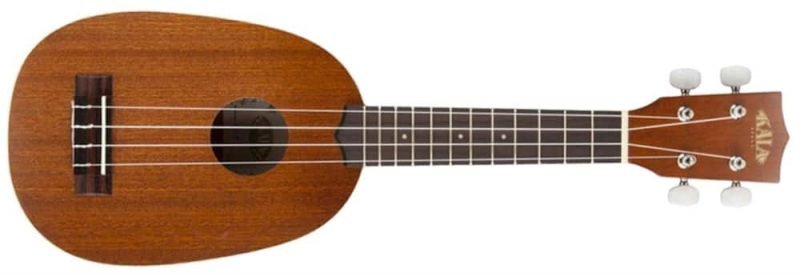
Pineapple ukuleles have a distinct oval body shape that looks like a pineapple. They have a similar scale and body length as a soprano, but some manufacturers make also build concert and tenor size ukes in a pineapple shape.
Recommended Pineapple Ukes
Sopranino & Sopranissimo Ukulele Sizes
Some manufacturers build ukuleles that are even smaller than a standard soprano. These tiny ukes are often categorized as sopranino or sopranissimo.
I couldn’t quite pin down standardized measurements for these smaller sizes, but the Ohana SK-21 sopranino has a total length of 19″, and their sopranissimo O’Nino ukulele is only 17″ long–that’s 4″ shorter than a regular soprano ukulele!
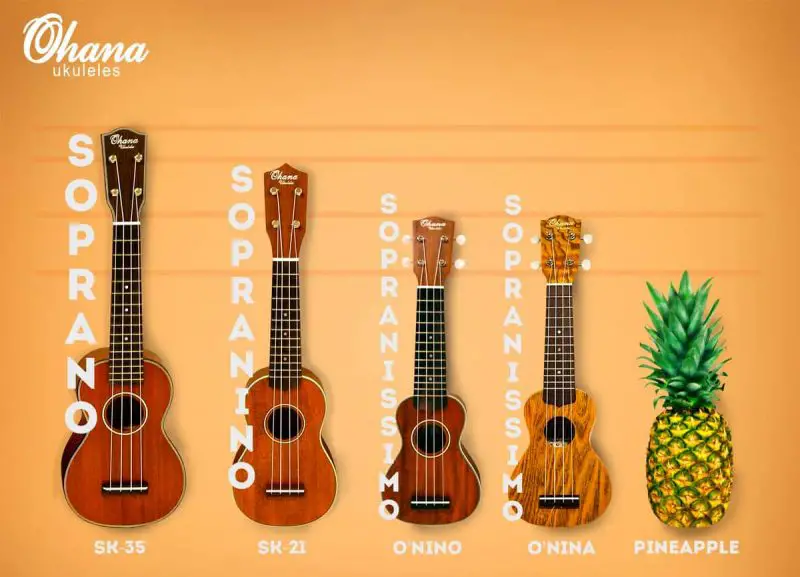
You Might Also Like...
-
The Best Ukulele Accessories (2022 Edition)
A short overview of the best uke accessories for beginners and intermediate uke players.
-
Buying Your First Ukulele: 3 Mistakes to Avoid
A quick list of three common mistakes I see many people make when shopping for their first ukulele.
-
How to Buy A Ukulele: The 2023 Ukulele Buying Guide
You've decided to buy a ukulele, now what? My ukulele buying guide will help you choose a ukulele that meets your needs and budget.






